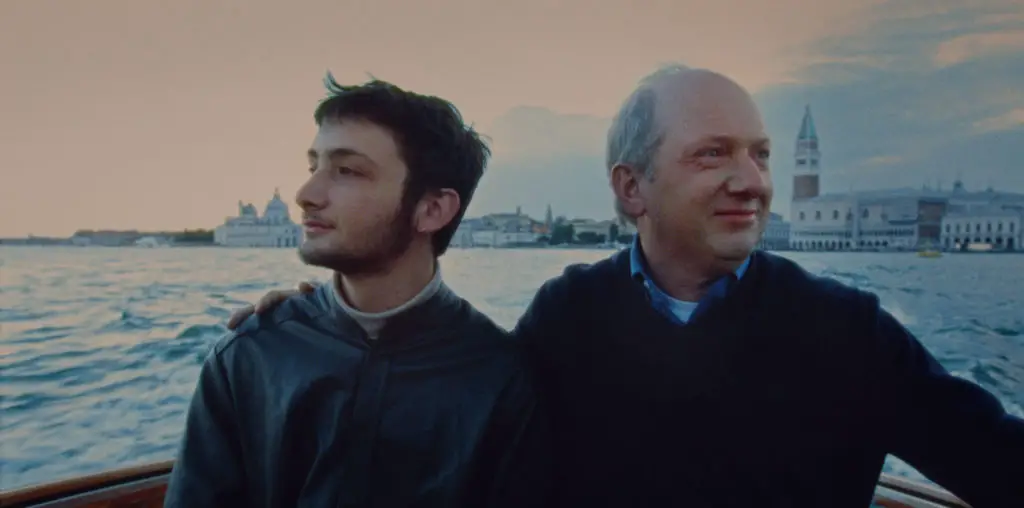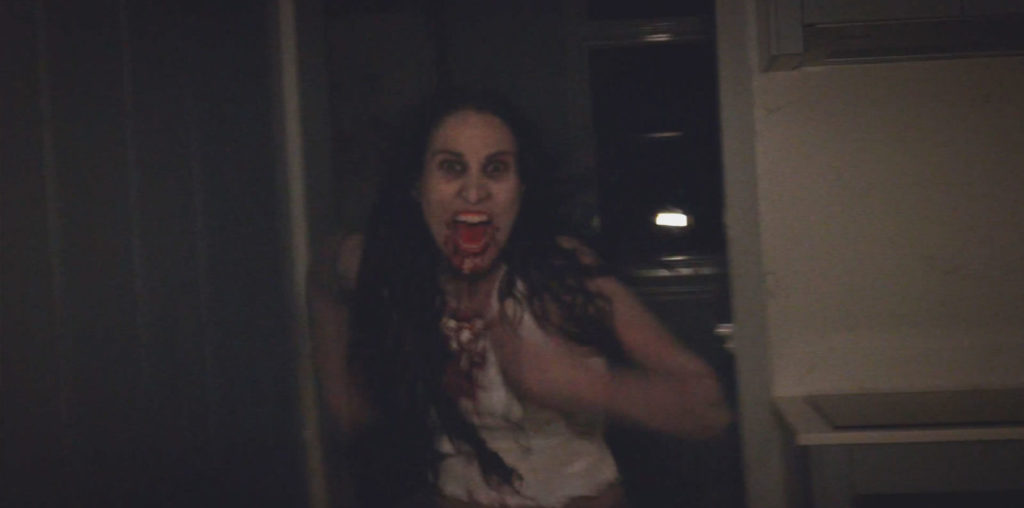
“In the Wolf’s Belly” is an intriguing and beautifully made short by Yiorgos Nalpantidis. The film shows us essentially the same sequence of images in five very different versions, which may represent different ways of seeing and interacting with the world.
The images themselves depict ordinary reality: waves breaking on rocks, trees swaying in the wind, a tiny bug crawling across a slide. In the first version of the sequence, the black and white images are out of focus and indistinct. A pulsing sound accompanies the naturally cyclic, breathy rhythm of the images, making everything look like pulsing microbes. Perhaps this version represents life on the most primal, cellular level. In a second version the images are also in cycles, but completely unnatural ones, caused by running the video footage backwards and forwards. When you see an ocean wave breaking forwards and backwards, it becomes obvious that this artificial means of trying to create a cycle by running time backwards has none of the natural flow of life as we know it.
In a third version of the footage, we see the same images in absolutely crisp, focused black and white video footage, perhaps representing our media culture and its biased notion of what “reality” looks like. In the fourth sequence, these same images are subjected to startling shifts of color and form through digital manipulation, creating unreal but highly dynamic and visually stimulating textures. In the last version of the images, they are reduced to a strange grid of beige dots, almost like an image of the way a computer itself would think about images, simply as a collection of numerical data.
In between some of these sequences we hear a conversation between a man and a woman, who discuss in elliptical, oblique dialog the woman’s desire to “change” reality to make it more “convenient.” When we see the images as the grid of beige pixels, we can see how “convenient” it is to convert all of reality to numerical values: in a digital world, all information can be spliced and interchanged. When biologists cracked the digital code of DNA, they gained the power to insert an amoeba’s genes into an elephant.
Nalpantidis’ video can be seen as a kind of “learning piece,” or what Brecht called a Lehrstüke. By presenting the same visual material in five ways, he brings our attention to different ways of using our consciousness and our perceptions. Nalpantidis’ creates compelling visual compositions and sound textures throughout, so the video never feels overly didactic, but instead is more like an illuminating tour of our own brains and cultural habits.

